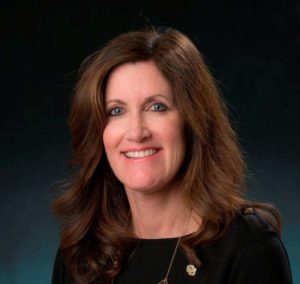
U.S. Senate
See Full Big Line
(D) J. Hickenlooper*
(R) Somebody
80%
20%

Governor
See Full Big Line
(D) Joe Neguse
(D) Phil Weiser
(D) Jena Griswold
60%
60%
40%↓

Att. General
See Full Big Line
(D) M. Dougherty
(D) Alexis King
(D) Brian Mason
40%
40%
30%

Sec. of State
See Full Big Line
(D) George Stern
(D) A. Gonzalez
(R) Sheri Davis
40%
40%
30%

State Treasurer
See Full Big Line
(D) Brianna Titone
(R) Kevin Grantham
(D) Jerry DiTullio
60%
30%
20%

CO-01 (Denver)
See Full Big Line
(D) Diana DeGette*
(R) Somebody
90%
2%

CO-02 (Boulder-ish)
See Full Big Line
(D) Joe Neguse*
(R) Somebody
90%
2%

CO-03 (West & Southern CO)
See Full Big Line
(R) Jeff Hurd*
(D) Somebody
80%
40%

CO-04 (Northeast-ish Colorado)
See Full Big Line
(R) Lauren Boebert*
(D) Somebody
90%
10%

CO-05 (Colorado Springs)
See Full Big Line
(R) Jeff Crank*
(D) Somebody
80%
20%

CO-06 (Aurora)
See Full Big Line
(D) Jason Crow*
(R) Somebody
90%
10%

CO-07 (Jefferson County)
See Full Big Line
(D) B. Pettersen*
(R) Somebody
90%
10%

CO-08 (Northern Colo.)
See Full Big Line
(R) Gabe Evans*
(D) Yadira Caraveo
(D) Joe Salazar
50%
40%
40%

State Senate Majority
See Full Big Line
DEMOCRATS
REPUBLICANS
80%
20%

State House Majority
See Full Big Line
DEMOCRATS
REPUBLICANS
95%
5%
 July 01, 2021 09:50 AM UTC
July 01, 2021 09:50 AM UTC 11 Comments
11 Comments
"…the wrong direction to be competitive in a statewide race." I'm fine with that. She's obviously an airhead who's never had an original thought.
I am ALL FOR teaching kids to read. But there is a problem, then we ought to do something effective about it. Since NO ONE talked about Critical Race Theory (with or without capitals) prior to this year, I doubt CRT is responsible for any problems with reading. If Granahl believes CRT is blocking reading skills, I’m fairly certain she would misdiagnose the problems of ANY office she might run for.
More likely, the problem with reading is with what resources are available to teach reading — American Public Media had a report on “Why aren’t kids being taught to read?” It said
Explicit and systematic phonics instruction would likely require training for teachers (who haven’t gotten it in their university training) and more support for reading instruction. When I was in a middle-class elementary school, the “extra” support came from moms who could volunteer to have kids read to them and continue drills on phonics if kids needed that. Now, that would probably require paraprofessionals, which would mean budget. I don’t expect Granahl is backing additional resources for schools.
Also fairly sure CRT is not displacing math education in any way or any amount.
Both approaches ( phonics and whole language) have validity, and work for some readers.There were just as many non-readers in the “ good old days” of all-phonics reading instruction ( and penmanship grades, punishing studetnts of color for being “loud”, segregating kids with disabilities, and many other educational gospels that have, thankfully, fallen into disuse).
Education professionals are accustomed to the 3 year cycle ( coordinated with school board elections) of The Absolute Greatest Latest Bajillion dollar curriculum ( or standards, teacher evaluation, standardized tests) that are Absolutely Guaranteed to Raise Student Test Scores!!
Reading programs of all stripes fall into this 3 year cycle as often as any.
My expertise is as a teacher of Englishas a second language. I do find that a phonics- based approach, i.e. learning the bizarre and often contradictory rules of English, is the best approach for those learners.
I’ve also seen a phonics approach work well for “struggling readers, often with subtle perceptual disabilities.
But phonics by itself is not enough to teach literacy.
For those kids lucky enough to grow up in literate families, being read to and with from infancy, associating reading with cuddling and sweet good-nights, reading is usually a joy, not an obstacle. Even if they have a”reading disability” , theyare motivated to keep on trying.
And what Meiner says below is also true; culturally responsive literature is absolutely crucial. Kids need to see themselves reflected in what they read.
2021's "wedgie" in school board races. Watch for this and calls for "scientific" reading or "informational text" rather than culturally responsive reading in Colorado schools. As though what kids read doesn't matter. If you want all kids to learn to read, all kids need to see themselves in what they read.
She's starting to sound as dumb as a box of boeberts.
As seen on the internet, "I bought one of those white noise machines to help me fall asleep. All it does is bitch about critical race theory, so I'm taking it back."
this had me laughing …
but who do you take it back to? and what sort of re-stocking fee do they charge?
I don't know. Definitely going to ask to speak to the manager to sort this out!
PEOPLE!
There is no such thing as "Critical Race Theory"! It is only a White nationalist term for history. History is not a theory, history is recorded factual events.
If one feels a need to add any modifier to "history," then call it "honest history"!
Well, there is…but it’s only taught in law school. What the white supremacists are going after is multicultural education, which is sourced from people of various ethnicities in literature and history.
This is also known as “comprehensive history”, since it attempts to tell a complex story from primary sources, with different points of view.
An astroturf group called No Left Turn is organizing attacks (public pressure / letter writing campaigns, fielding slates of RWNJ candidates) on school boards throughout the country. They want to eliminate “honest history”, in your term, in favor of the winner’s version.
A local school board member gets hundreds of emails trying to stop the ( nonexistent) teaching of “critical race theory”.